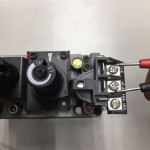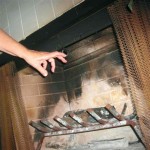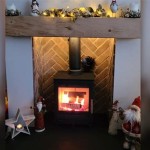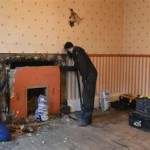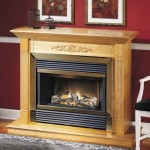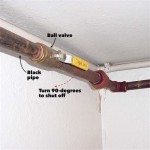Doors For Fireplace Insert: Enhancing Efficiency, Safety, and Aesthetics
Fireplace inserts represent a significant upgrade from traditional open fireplaces, offering improved heating efficiency and reduced emissions. A critical component of a fireplace insert is the door, which plays a vital role in its functionality, safety, and overall appearance. Choosing the correct door for a fireplace insert requires careful consideration of various factors, including material, style, size, and functionality.
A fireplace insert door primarily serves to contain the fire within the firebox, preventing embers and sparks from escaping into the room. This drastically reduces the risk of fire hazards and damage to surrounding furnishings. Furthermore, the door controls the airflow to the fire, influencing the burn rate and heat output. Proper airflow management contributes to more efficient combustion and reduces the amount of creosote buildup in the chimney, which is a leading cause of chimney fires. Beyond these practical benefits, a well-chosen fireplace insert door enhances the aesthetic appeal of the fireplace, transforming it into a more visually pleasing focal point within the room.
Key Point 1: Material Considerations for Fireplace Insert Doors
The materials used in the construction of fireplace insert doors directly impact their durability, performance, and appearance. Common materials include cast iron, steel, and glass. Each material possesses unique characteristics that make it suitable for specific applications and budgets.
Cast iron doors are known for their robustness and ability to retain heat. Cast Iron provides excellent insulation, allowing the firebox to reach and maintain higher temperatures, maximizing heat output and efficiency. Cast iron doors often feature intricate designs and decorative elements, adding a touch of elegance to the fireplace. However, cast iron doors can be heavy and more expensive than other options, also being vulnerable to cracking under extreme temperature fluctuations if not properly maintained.
Steel doors offer a balance of strength and affordability. Steel doors are lighter than cast iron doors, making them easier to install and manipulate. Steel conducts heat effectively, distributing warmth into the room. Steel doors are also more resistant to cracking compared to cast iron. Steel doors are commonly used in modern and contemporary fireplace insert designs, often featuring clean lines and minimalist aesthetics. The durability of steel will depend on the gauge and quality of the steel used in manufacturing the door.
Glass doors are a popular choice for fireplace inserts, offering unobstructed views of the fire. Glass doors are typically made from high-temperature ceramic glass, which can withstand extreme heat without shattering. Glass doors allow radiant heat to emanate into the room, increasing the heating efficiency of the insert. Glass doors can be combined with cast iron or steel frames for added strength and aesthetic appeal. However, glass doors require regular cleaning to remove soot and ash buildup, which can obstruct the view of the fire. The type of glass used will determine the level of heat resistance and clarity of the view.
When selecting a door material, consider the desired aesthetic, budget, and heating requirements. Matching the right material to the fireplace insert's design and intended use ensures optimal performance and longevity.
Key Point 2: Style and Design of Fireplace Insert Doors
The style and design of the fireplace insert door significantly impact the overall aesthetic of the fireplace and the surrounding room. Fireplace insert doors are available in a wide range of styles, from traditional to contemporary, ensuring a seamless integration with any decor.
Traditional style doors often feature ornate details, such as raised panels, decorative castings, and intricate hardware. These doors evoke a sense of classic elegance and are well-suited for more formal living spaces. Materials commonly used in traditional doors include cast iron and steel, often finished with antique or distressed coatings. Many traditional designs will incorporate arched windows for enhanced visual appeal and a wider viewing area of the fire.
Contemporary style doors are characterized by clean lines, minimalist designs, and a focus on functionality. Contemporary doors often feature large glass panels framed in sleek steel or aluminum. These doors create a modern and sophisticated look that complements contemporary interiors. Common finishes for contemporary doors include brushed nickel, matte black, and stainless steel. These designs emphasize a clean and unobstructed view of the fire.
Beyond traditional and contemporary styles, there are numerous other design options available, including arched doors, rectangular doors, and custom-designed doors. Arched doors add a touch of elegance and sophistication to the fireplace, while rectangular doors offer a clean and modern look. Custom-designed doors allow homeowners to create a unique and personalized fireplace that reflects their individual style. The complexity of the design often influences the overall cost and installation process.
Consider the existing décor of the room and the overall aesthetic you wish to achieve when selecting a fireplace insert door. Choosing a door style that complements the surrounding environment will create a cohesive and visually appealing focal point.
Key Point 3: Functionality and Features of Fireplace Insert Doors
Beyond aesthetics, the functionality and features of a fireplace insert door are crucial for ensuring optimal performance, safety, and ease of use. These include door operation, air control mechanisms, and safety features.
Door operation refers to the way the door opens and closes. Common door operation types include hinged doors, sliding doors, and bi-fold doors. Hinged doors are the most common type, opening outward on hinges attached to the firebox. Sliding doors slide horizontally along a track, offering easy access to the firebox without taking up extra space in the room. Bi-fold doors fold in on themselves, providing a wide opening while minimizing the space required for operation. The choice of door operation depends on personal preference, space constraints, and the specific design of the fireplace insert.
Air control mechanisms regulate the airflow to the fire, influencing the burn rate, heat output, and efficiency of the fireplace insert. Air control mechanisms can be manual or automatic. Manual air controls allow the user to adjust the airflow by manually opening or closing dampers. Automatic air controls use sensors and electronic controls to automatically adjust the airflow based on the temperature of the firebox. Proper air control is essential for optimizing combustion and minimizing creosote buildup. The sophistication of the air control system directly impacts the efficiency and ease of use of the fireplace insert.
Safety features are paramount in fireplace insert doors. These include features such as door interlocks, which prevent the door from being opened while the fire is burning, and spark screens, which prevent embers and sparks from escaping into the room. High-temperature gaskets are essential for sealing the door tightly against the firebox, preventing air leaks and maximizing efficiency. Child safety latches are also available to prevent young children from opening the door. Prioritizing safety features ensures a safe and enjoyable fireplace experience.
When selecting a fireplace insert door, carefully consider the functionality and features that are most important to your needs. Choosing a door that is easy to operate, provides adequate air control, and incorporates essential safety features ensures optimal performance and safety.
The correct size of the door is also important. Ensure the door accurately matches the opening of the fireplace insert. Improper sizing can negatively affect performance and be hazardous.
Installation is also crucial for the functionality and safety of the door. It is recommended to hire a qualified professional to install a fireplace insert door. This ensures that the door is installed properly, safely, and according to manufacturer specifications. A proper installation minimizes the risk of air leaks, fire hazards, and other potential problems.

Glass Fireplace Doors Stoll Industries Browse By Type Or Style

Benefits Of Glass Doors Fireplace Door Sets Burlington Wi

Wilkening Fireplace Fireplaces Doors Inserts Walker Mn

Valor G3 With Fenderfire Double Doors Gas Fireplace Insert Fergus

Fireplace Glass Doors Vs Screens Full Service Chimney

Grandseal Masonry Fireplace Door With Ceramic Glass Ancient Iron Trim

Matte Black Heat N Glo Em415 Em415r Fireplace Door

Mendota Fv44i Gas Fireplace Insert With Willow Doors

Fireplace Doors Godby Hearth And Home

Stoll Vintage Fireplace Door Stylish Fireplaces

